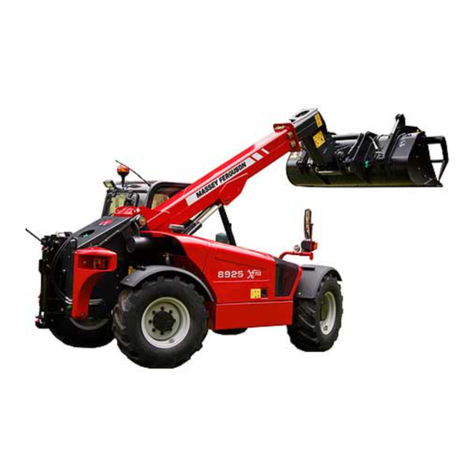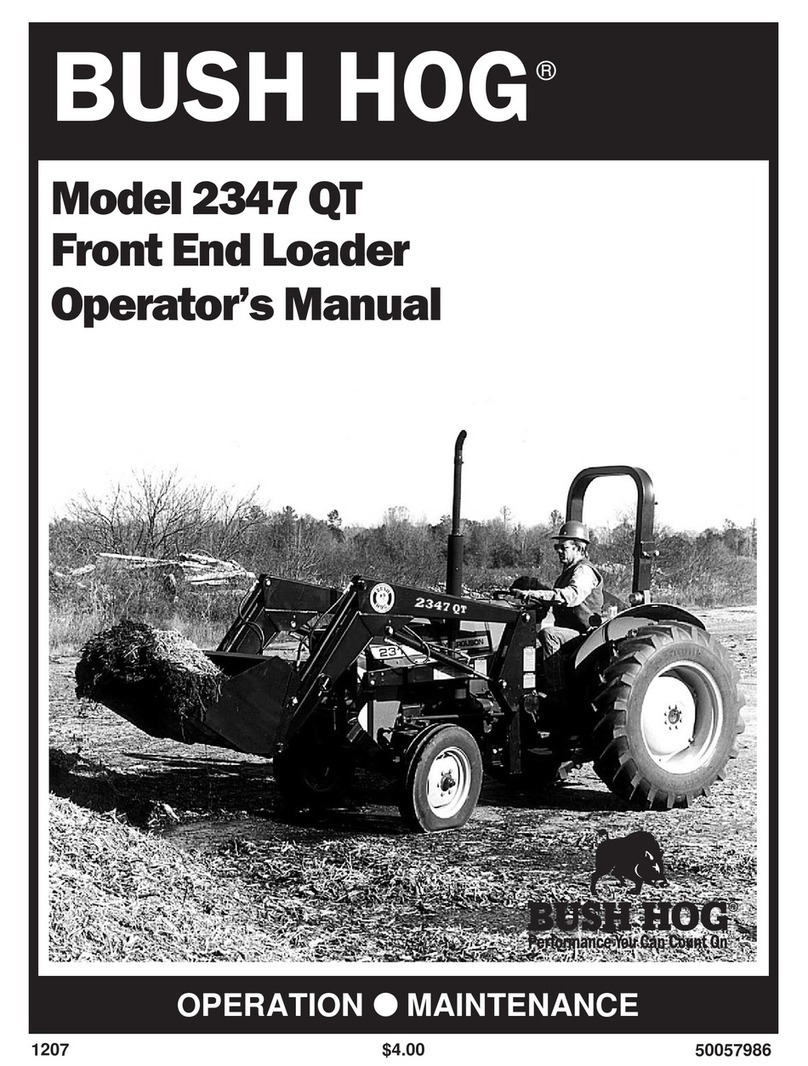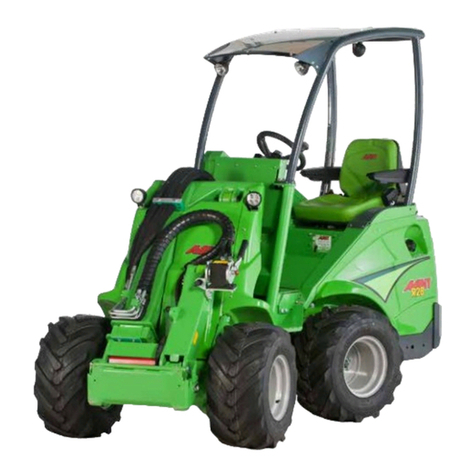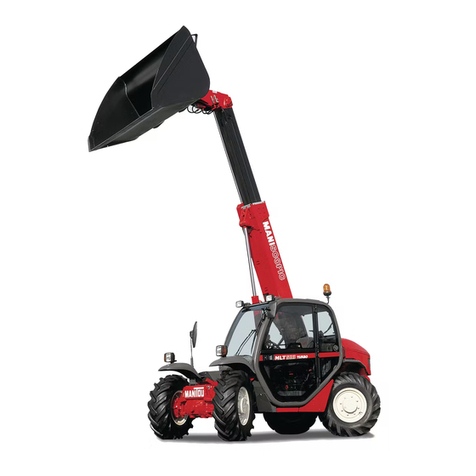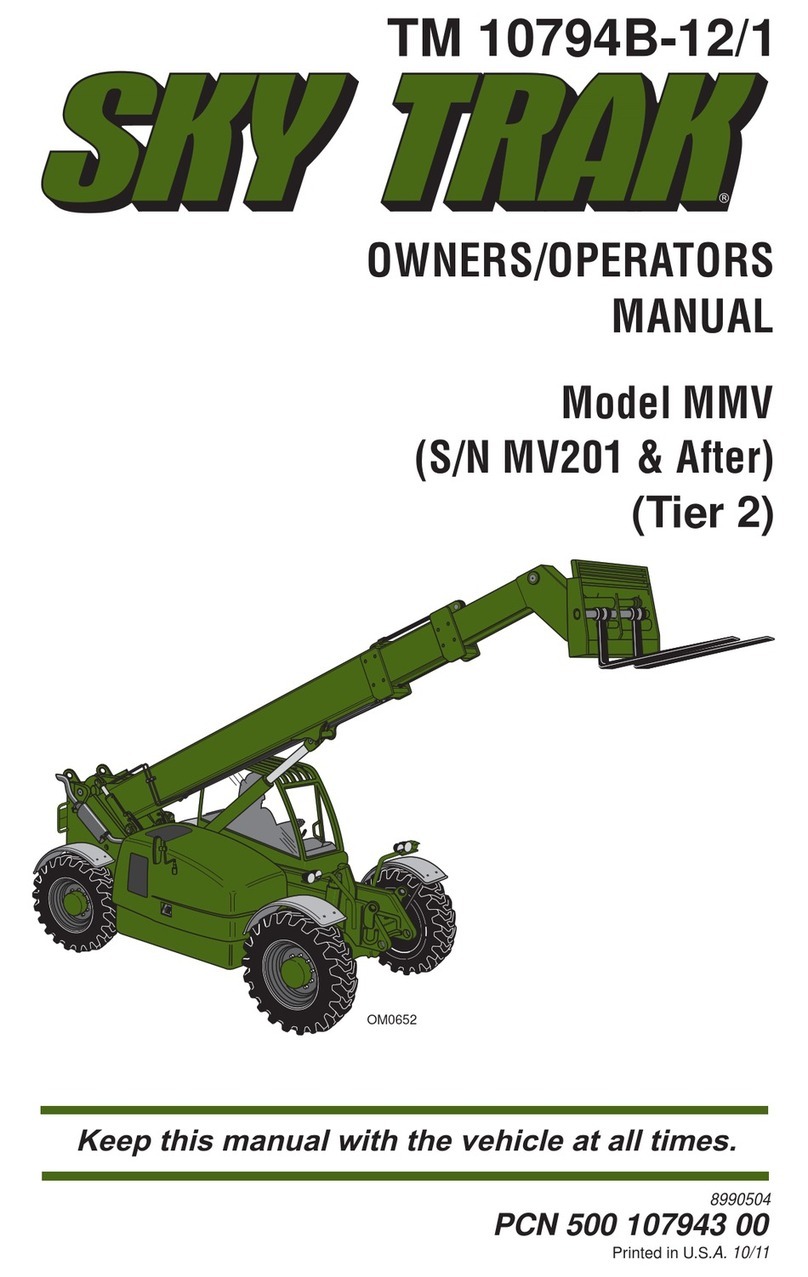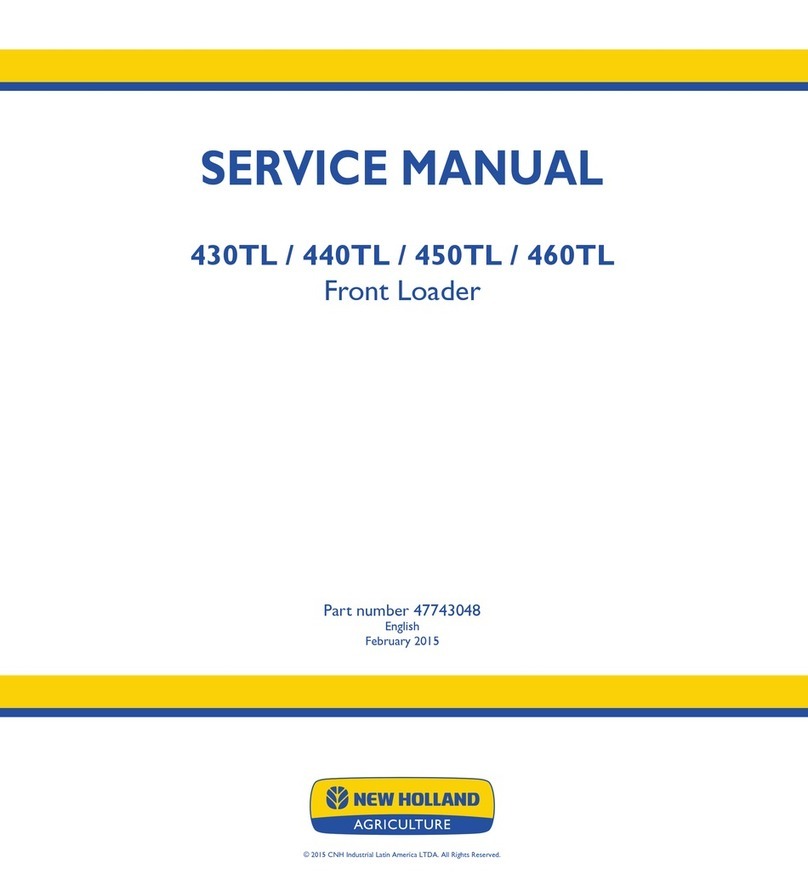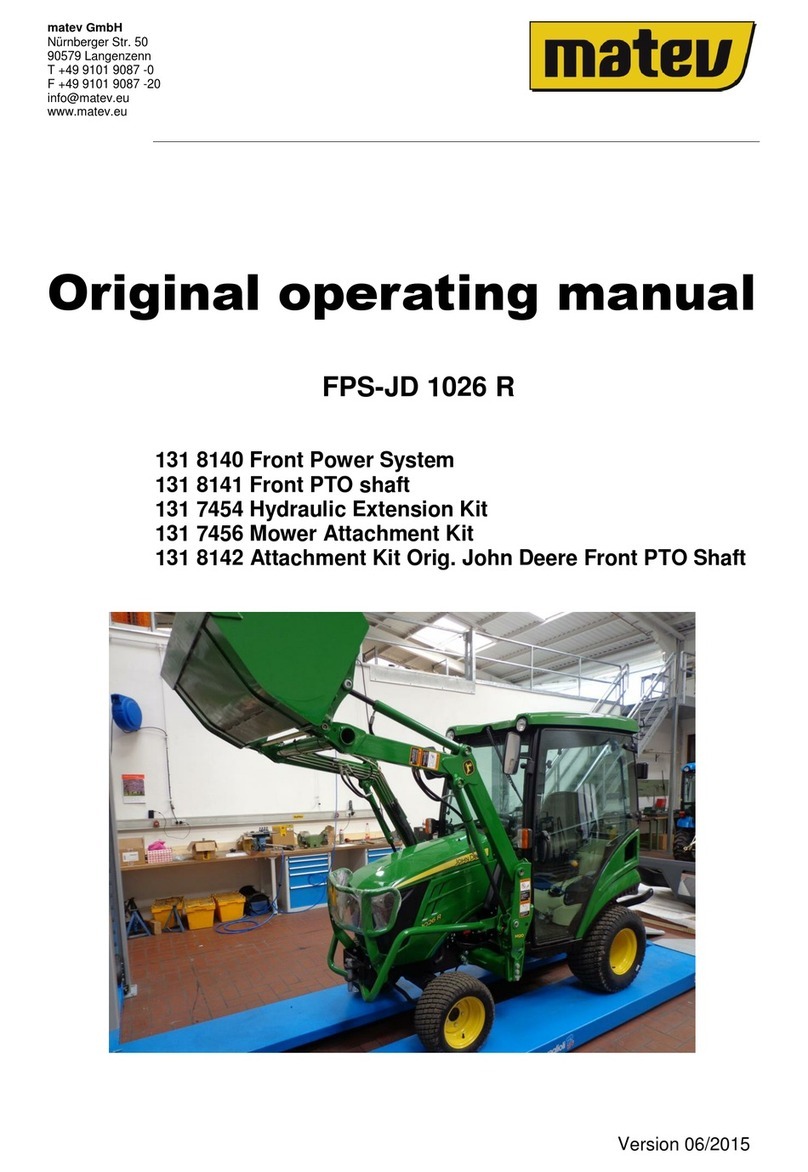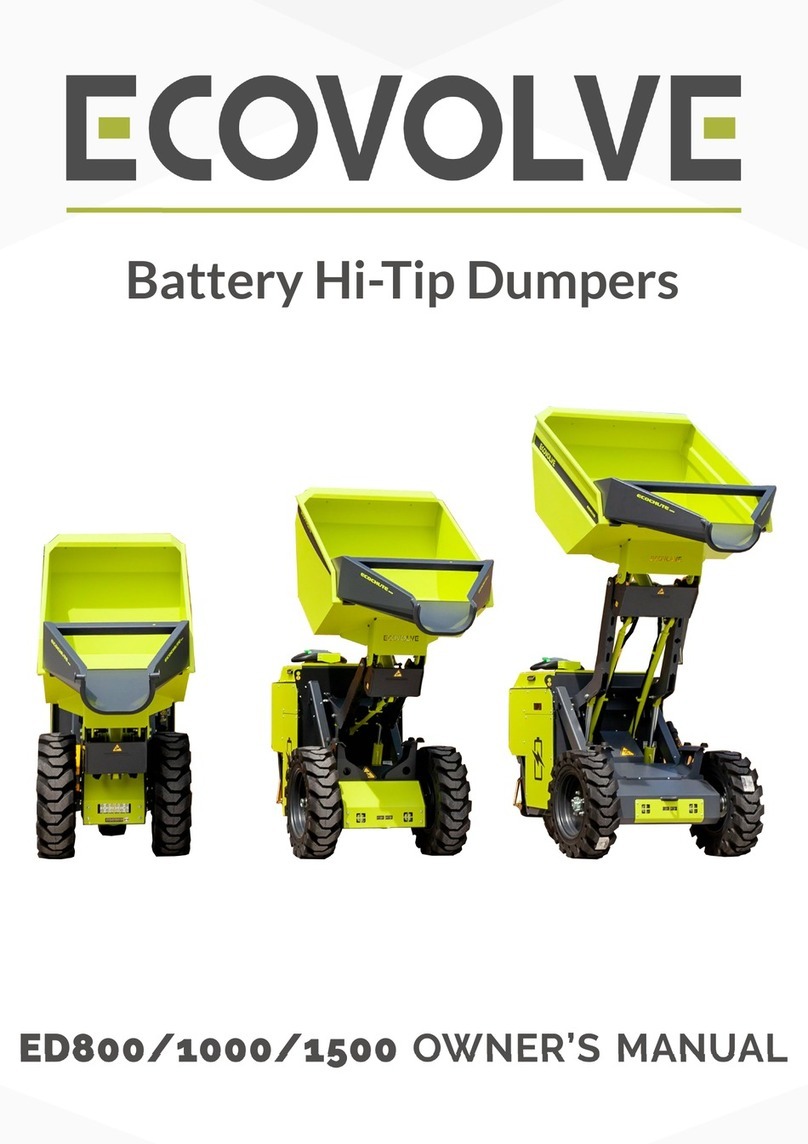WIFO K55A Operator's manual

WIFO-Anema B.V.
Hegebeintumerdyk 37 – 9172 GP Ferwert – Holland
Telefoon (0031) 518411318 – Telefax (0031) 518411563
www.wifo.nl – email: [email protected]
Manual and safety instructions
(S)K55A/(S)K55C
Box rotator
GB
K55A/K55C
SK55A/SK55C


1
English
Table of contents
1. TO THE USER...................................................................................................................................................................2
1.1 INTRODUCTION ...................................................................................................................................................................... 2
1.2 SAFETY PRECAUTIONS AND WARNINGS ........................................................................................................................................ 3
1.2.1 Safety precautions .................................................................................................................................................... 3
1.2.2 Safety stickers and warning signs............................................................................................................................. 5
1.2.3 Placement of the safety stickers on the machine ..................................................................................................... 6
1.3 PURPOSE OF USE .................................................................................................................................................................... 7
1.4 LIABILITY............................................................................................................................................................................... 8
1.5 WARRANTY ........................................................................................................................................................................... 8
2. TECHNICAL DATA............................................................................................................................................................9
2.1 GENERAL TECHNICAL DATA...................................................................................................................................................... 9
2.2 K55A AND K55C ................................................................................................................................................................ 10
2.2.1 Parts list ................................................................................................................................................................. 10
2.2.2 Commencement of operation K55A and K55C........................................................................................................ 12
2.3 SK55A AND SK55C............................................................................................................................................................. 13
2.3.1 Parts list ................................................................................................................................................................. 13
2.3.2 Provisions for connecting SK55A and SK55C........................................................................................................... 15
2.3.3 Commencement of operation SK55A and SK55C .................................................................................................... 16
3. FAULTS AND MAINTENANCE....................................................................................................................................................... 17
3.1 PREVENTIVE MAINTENANCE AND LUBRICATION .......................................................................................................................... 17
3.2 TROUBLESHOOTING.............................................................................................................................................................. 18
3.3 WORK TO BE CARRIED OUT BY A COMPETENT MECHANIC.............................................................................................................. 19
3.3.1 Instructions for replacing the sleeve bearing of K55A, K55C, SK55A en SK55C....................................................... 19

2
1. To the user
1.1 Introduction
This manual gives information about the commencement of operation, use and maintenance of your newly
purchased WIFO box rotator. Also included in this manual are a number of safety instructions to create a safe
working environment.
WIFO-Anema B.V. continuously aims to improve its products. WIFO-Anema B.V. reserves the right to introduce any
changes and improvements deemed necessary without prior notice.
Please read the manual thoroughly and observe the safety procedures before putting the unit into operation.
Contact your dealer for any further questions or concerns you may have.
We hope you will enjoy working with your WIFO box rotator.
Keep this manual in a safe place for future reference!
WIFO-Anema B.V.
Dealer:
PLEASE NOTE:
Carefully read this manual before you put the machine into operation and act upon all directions that are
given. This is to guarantee its safe, trouble-free operation.

3
1.2 Safety precautions and warnings
Please read this manual before you put the machine into operation for the first time, and observe the safety
instructions at all times. The most important instructions are marked with a symbol.
Any person in charge of the commencement of operation, the operation itself or the maintenance of the machine is
urged to carefully read and observe the following instructions.
1.2.1 Safety precautions
Centre the load;
Place the forks as widely as possible;
Position the third fork against the side of the box.
Restrict driving with the load in elevated position;
Do no tilt the load during transport;
Slightly tilt the forklift mast backwards during transport.
Do not allow any person to ride on the forks.
This symbol is used for all important safety instructions throughout this manual. Carefully observe the
instructions and be very cautious!
This symbol is used for all important actions that should not be carried out under any circumstances.
Carefully observe these prohibitions!
Do not allow any person to stand under the load, and
stay out of the working area of the box rotator.

4
Operate the box rotator from the driver’s seat of the
forklift/tractor only.
Park the forklift truck / mast with the box rotator in the lowest position only. Make sure that unexpected
movements are ruled out if the forklift truck / tractor is not being used. Place the box rotator on its back on a
flat, stable surface after it has been removed from the forklift truck / mast for storage.
For tilting work, use only durable boxes with flooring or grooves.
Make sure the operating lever for rotating is not mixed up with any other operating lever to prevent
inadvertent tilting or side-shifting. Only the side-shift function remains in the event of a power cut while
operating an electrically controlled valve. Disable the tilting motion by closing the ball valve next to the
balancing valve. Unintentional operation is no longer possible.
Make sure the hydraulic hoses and any power cables do not get jammed and that the box rotator is able to
move freely.
During the controlled tilting action, be aware of the back-tilt moment of the rotating cylinder.
Make sure that the third fork supporting the box is secured at all times. The third fork should be positioned
so the box can be picked up in the centre - more or less. Secure the fork using the pin adjustment, and
always fully insert the catch into the locking hole.

5
1.2.2 Safety stickers and warning signs
Several safety stickers have been put onto the machine. The meaning of the stickers on the machine is as follows:
NB:
Please read the instructions from the manual prior to any maintenance to the
machine!
Turn of the engine and remove the key from the ignition for the time
maintenance on the machine is carried out!
1
Danger:
Always keep a safe distance from the machine!
2
A safe working environment also requires personnel to be well-informed about the various safety stickers on
the machine. Be aware of the hazards they warn you to look out for.
Replace any loose, illegible or missing stickers.

6
2
1
2
1
Figure 1.2.1- Position safety stickers for K55A and K55C Figure 1.2.2- Position safety stickers for SK55A and SK55C
1.2.3 Placement of the safety stickers on the machine

7
1.3 Purpose of use
The WIFO box rotator is exclusively used for transporting and sideways tilting boxes with flooring or grooves,
provided that the overall weight of the box including its load does not exceed the carrying capacity of the box
rotator. The box rotator must be attached to a FEM II (K55A and SK55A) or FEM III (K55C and SK55C) fork carrier of a
forklift truck or forklift mast.
Do not use the box rotator for carrying people under any circumstances!
The overall weight of the box rotator including its load may not exceed the capacity of the forklift truck or the
forklift mast. (See the name plate on the forklift truck/forklift mast)

8
1.4 Liability
Any person working with or on the machine must have read this manual. The machine is to be used for its intended
purpose only. Included in the intended purpose are, among other things:
1. Work must be carried out in accordance with the directions and within the functional restrictions (e.g.
maximum hydraulic working pressure) as outlined in the regulations. Use only sound and appropriate tools.
2. Electric/electronic equipment and accessories (e.g. cables) must be treated in accordance with the general
accepted policy for using non-waterproof portable electric and electronic equipment, such as:
a) Storing and keeping in a clean, dry environment away from rodents and the like; and
b) Protecting the equipment against severe, uncushioned shocks and water (precipitation).
3. Use only original or compatible spare parts. Such parts must be assembled as directed (e.g. by observing the
recommended tightening moments). Spare parts (as well as lubricants) are considered compatible only if
explicitly approved by WIFO or in the event that the customer is able to prove they possess the required
properties for the purpose(s) they are used.
4. Use only lubricants that meet the specifications as described in the directions.
5. Always observe the local regulations in terms of accident prevention, safety, traffic and transport.
6. Only trained personnel with knowledge of the possible hazards have permission to work with/on the
machine.
7. WIFO-Anema B.V. will assume no liability in any shape or form for losses or damage caused following
modifications to the machine, which have not been explicitly approved by WIFO.
1.5 Warranty
WIFO-Anema B.V. guarantees the soundness of its products in terms of materials used and/or structural defects.
However, in any event this warranty is limited to the free-of-charge replacement or repairs of the defect product, or
part thereof. WIFO-Anema B.V. assumes no liability for any loss or damage arising from faulty deliveries and/or the
breakdown of purchased goods before the warranty period has expired. The warranty period for this product is
twelve months.
Noncompliance with the rules and directions from this manual will be considered as serious negligence, for
the consequences of which WIFO-Anema B.V. accepts no liability whatsoever. In such cases, the user will
bear the full risk of his actions.
WIFO-Anema B.V. is continuously working on the improvement of its products. For that reason, WIFO-
Anema B.V. reserves the right to introduce any changes and improvements deemed necessary without
prior notice. However, it does not imply an obligation to make any such changes or improvements to
machines bought by customers in the past.

9
2. Technical data
2.1 General technical data
1The back-tilt moment has been calculated at 18 Mpa (180 bar) working pressure.
2Four positions from inside fork to centre of rotating shaft.
Model
Letter
Description
K55A/K55C/SK55A/SK55C
L
Rotating to the left
R
Rotating to the right
SK55A/SK55C
E
Electrically controlled reversing valve
S
4-hose connection
Table 2.1.2- Description data on model plate
Model
K55A
K55C
SK55A
SK55C
Max. carrying capacity
2500 kg
2500 kg
3500 kg
3500 kg
Weight
295 kg
370 kg
370 kg
450kg
Max. working pressure
22Mpa (220 bar)
22Mpa (220 bar)
22Mpa (220 bar)
22Mpa (220 bar)
Back-tilt moment 1
10,8 KNm
10,8 KNm
10,8 KNm
10,8 KNm
Center of gravity
156 mm
156 mm
132 mm
138 mm
Frontal extension length
173 mm
193 mm
173 mm
193 mm
Height of the fork carrier
407 mm (FEM II)
407 mm (FEM II)
508 mm (FEM III)
508 mm (FEM III)
Rotation angle
180°
180°
180°
180°
Fork carrier width
1070 mm
1070 mm
1070 mm
1070 mm
Side-shift
Nee
Nee
Ja
Ja
Third fork foldaway 2
580/700/800/900mm
580/700/800/900mm
580/700/800/900mm
580/700/800/900mm
Tabel 2.1.1-Uitvoeringen WIFO kistenkantelaar

10
2.2 K55A and K55C
2.2.1 Parts list
Figure 2.2.1- Parts drawing for K55A and K55C

11
Type: K55A/K5C
Nr.
Onderdeel:
Artikelnr.:
Nr.
Onderdeel:
Artikelnr.:
1
Back plate K55A
-
31
Fork folding fork
-
Back plate K55C
-
32
Grease nipple M8
-
2
Clamping strip 40x20-L300 (t.b.v. K55A)
4290081
33
Folding fork extention
-
Clamping strip 47x30-L300 (t.b.v. K55C)
4290091
34
Compression spring Ø42x3,5-L40
-
3
Bolt M16x70
-
35
Locking plate folding fork extention
-
4
Spring washer M16
-
36
Body washer M10
-
5
Bolt M12x60
-
37
Bolt M10x25
-
6
Nut M12
-
38
Grease nipple M8
-
7
Bolt M12x30
-
39
Gas spring block
-
8
Heico lock washer M12
-
40
Gas spring folding fork
-
9
Bolt M12x30
-
41
Tensioner gas spring
-
10
Heico lock washer M12
-
42
Nut M20
-
11
Pivot pin Ø125x172 (t.b.v. K55A)
-
43
Washer M20
-
Pivot pin Ø125x189 (t.b.v. K55C)
-
44
Locknut M20
-
12
Fork carrier K55A
-
45
Lockpin folding fork
-
Fork carrier K55C
-
46
Eccentric lockpin
-
13
Gearwheel C45-M5-Z=60
4290114
47
Compression spring Ø35x3-L40
-
14
Tapered roller bearing 33018
429029
48
Bolt M10x45
-
15
Tapered roller bearing 33117
429030
49
Locknut M10
-
16
Packing seal Ø145x125-L14 H9
429035
50
Nameplate WIFO
-
17
Packing seal Ø145x125-L14 H9
429035
51
Rack shaft C45-M5-Ø60-L783
-
18
Locking plate Ø160-L25
4290073
52
Rack block
-
19
Grease nipple M8
-
53
Heico lock washer M30
-
20
Adjusting screw M12x40
-
54
Bolt M30x80
-
21
Nut M12
-
55
Flat nut M30
-
22
Spring washer M12
-
56
Circlip internal Ø80
-
23
Bolt M12x50
-
57
Stripper Ø60x70x7/10
-
24
Hex sock bolt M12x80 12.-
-
58
Bronze bearing rack shaft Ø75x60,2-L70
-
25
Roll pin Ø14x90
-
59
Rack section
-
26
Bolt M16x25
-
60
Rotating cylinder DW80-35-377
-
27
Spring washer M16
-
61
Locknut M14
-
28
Fork positioner folding fork
-
62
Ball valve 3/8”2-weg
429062
29
Pin folding fork Ø30-L201
-
63
Balancing valve 3/8”EW
429057
30
Roll pin Ø10x60
-
64
Adjusting screw M10x20
-
Tabel 2.2.1-Onderdeellijst voor K55Aen K55C

12
2.2.2 Commencement of operation K55A and K55C
1. Remove the clamping strip (2).
2. Remove the forks from the forklift truck or forklift mast.
3. Make sure the fork carrier is straight and clean.
4. Place the box rotator onto the fork carrier of the forklift truck or forklift mast.
5. Make sure the locking cam slots into the recess in the centre of the fork carrier. If no recess is available:
a) Grind such a recess, or
b) Grind the locking cam from the box rotator and attach a sound locking cam on the spot of an existing recess
in the fork carrier. In doing so, make sure the box rotator sits secure in the centre in front of the fork carrier,
so it is unable to slide sideways.
6. Attach the clamping strip (2) using two bolts M16 x 70(3). Secure these bolts tight! (140 Nm)!
7. Check to make sure the hydraulic hoses are clean before connecting them to the rapid-action couplings, to
prevent any debris from entering the hydraulics of the machine.
8. Connect the hydraulic hoses to the dual-action connection on the fork carrier.
9. Remove the check nuts M16x25 (26) in the lower plate of the fork carrier of the box rotator. Suspend the
forks to the fork carrier and attach the check nuts M16x25 (26).
10. Adjust the plug-in fork, depending on the width of the boxes to be rotated.
11. Make sure that the locking pin of the folding fork (45) completely fits into the locking hole to prevent the
arm from coming loose during the tilting movement. In doing so, the eccentric locking pin (46) must be
pointing downwards.
12. Turn the lever of the ball valve (62) so it opens, before rotating. It will be open when the lever is parallel to
the hydraulic pipe.
13. Subsequently check that the hydraulic hoses can move freely and check that the system is not leaking oil.
14. Check the correct operation of the box rotator by controlling the hydraulic functions.
The WIFO box rotator is now ready to be used.

13
2.3 SK55A and SK55C
2.3.1 Parts list
Figure 2.3.1- Parts drawing for SK55A and SK55C

14
Type: SK55A/SK55C
Nr.
Onderdeel:
Artikelnr.:
Nr.
Onderdeel:
Artikelnr.:
1
Back plate K55A
-
39
Gas spring folding fork
-
Back plate K55C
-
40
Tensioner gas spring
-
2
Clamping strip (t.b.v. SK55A)
-
41
Nut M20
-
Clamping strip 50x25-L100 (t.b.v. SK55C)
-
42
Washer M20
-
3
Bolt M16x50
-
43
Locknut M20
-
4
Spring washer M16
-
44
Lockpin folding fork
-
5
Bolt M12x60
-
45
Eccentric lockpin
-
6
Nut M12
-
46
Compression spring Ø35x3-L40
-
7
Bolt M12x30
-
47
Bolt M10x45
-
8
Heico lock washer M12
-
48
Locknut M10
-
9
Bronze bearing Ø75x60,8-L90
-
49
Nameplate WIFO
-
10
Stripper Ø60x70x7/10
-
50
Rack shaft C45-M5-Ø60-L783
-
11
Pivot pin Ø125x172 (t.b.v. SK55A)
-
51
Rack block
-
Pivot pin Ø125x189 (t.b.v.SK55C)
-
52
Heico lock washer M30
-
12
Fork carrier SK55A
-
53
Bolt M30x80
-
Fork carrier SK55C
-
54
Flat nut M30
-
13
Gearwheel C45-M5-Z=60
4290114
55
Circlip internal Ø80
-
14
Tapered roller bearing 33018
429029
56
Stripper Ø60x70x7/10
-
15
Tapered roller bearing 33117
429030
57
Bronze bearing rack shaft Ø75x60,2-L70
-
16
Packing seal Ø145x125-L14 H9
429035
58
Rack section
-
17
Packing seal Ø145x125-L14 H9
429035
59
Rotating cylinder DW80-35-377
-
18
Locking plate Ø160-L25
4290073
60
Locknut M14
-
19
Grease nipple M8
-
61
Ball valve 3/8”2-weg
429062
20
Adjusting screw M12x40
-
62
Balancing valve 3/8”EW
429057
21
Nut M12
-
63
Adjusting screw M10x20
-
22
Spring washer M12
-
64
Hex sock bolt M8x16
-
23
Bolt M12x50
-
65
Grease nipple M8
-
24
Hex sock bolt M12x80 12.-
-
66
Washer Ø50x17-L8
-
25
Roll pin Ø14x90
-
67
Spring washer M16
-
26
Bolt M16x25
-
68
Bolt M16x40
-
27
Spring washer M16
-
69
Sideshift cylinder DW70-30-200
-
28
Fork positioner folding fork
-
70
Bolt M16x70
-
29
Pin folding fork Ø30-L201
-
71
Spring washer M16
-
30
Roll pin Ø10x60
72
Guiding section left
-
31
Fork folding fork
-
73
Guiding section right
-
32
Grease nipple M8
-
74
Guiding shaft Ø60-L810
-
33
Folding fork extention
-
75
Guiding shaft Ø60-L810
-
34
Compression spring Ø42x3,5-L40
-
76
Hydraulics mounting plate
-
35
Locking plate folding fork extention
-
77
Bolt M16x50
-
36
Body washer M10
-
78
Heico lock washer M16
-
37
Bolt M10x25
-
79
Bolt M10x30
-
38
Gas spring block
-
80
Washer M10
-
Table 2.3.1- Parts list for SK54A and SK55C

15
2.3.2 Provisions for connecting SK55A and SK55C
Model with four-hose connection
Model with electro-hydraulic valve
No.
Description
Comments
1
Feed-through Block four-hose connection
-
1
Attachement electro-hydraulically controlled valve
-
2
Electro-hydraulic valve
-
3
Coil of the electro-hydraulic valve
-
4
Switch on the forklift truck handle
-
Table 2.3.2- Parts list connections for SK55A and SK55C

16
2.3.3 Commencement of operation SK55A and SK55C
1. Remove the clamping strips (2).
2. Remove the forks from the forklift truck or forklift mast.
3. Make sure the fork carrier is straight and clean.
4. Place the box rotator onto the fork carrier of the forklift truck or forklift mast.
5. Make sure the locking cam slots into the recess in the centre of the fork carrier. If no recess is available:
a) Grind such a recess, or
Grind the locking cam from the box rotator and attach a sound locking cam on the spot of an existing recess
in the fork carrier. In doing so, make sure the box rotator sits secure in the centre in front of the fork carrier,
so it is unable to slide sideways.
6. Attach the clamping strips (2) with four bolts M16x60 (3). Secure these bolts tight! (140 Nm)
7. Check to make sure the hydraulic hoses are clean before connecting them to the rapid-action couplings, to
prevent any debris from entering the hydraulics of the machine.
8. Depending on the model, the following hydraulic hoses are connected:
a) Electrically controlled reversing valve:
Connect the hydraulic supply/discharge hoses to the dual-action connection on the fork carrier.
Mount the switch (4), see chapter 2.3.2, supplied in such a location that the lifting equipment operator will
be able to turn it on and off from his control post, without the risk of mixing it up with any other controls.
For a safe working environment, avoid situations such as inadvertently starting the machine or not being
able to control it. Keep an eye on the correct voltage of the lifting device and the valve. The voltage is shown
on the coil. Connect a 2-core cable as per the electric diagram. Include a warning light, fuse and/or plug
socket in the circuit, if so required.
b) Four-hose connection:
Connect the two pairs of hydraulic supply/discharge hoses to the dual-action connection on the fork carrier.
9. Remove the two bolts M16x25 (26) in the lower plate of the fork carrier of the box rotator. Suspend the
forks to the fork carrier and attach the two bolts M16x25 (26).
10. Adjust the folding fork depending on the width of the boxes to be rotated.
11. Make sure that the locking pin of the folding fork (45) completely fits into the locking hole to prevent the
arm from coming loose during the tilting movement. In doing so, the eccentric locking pin (46) must be
pointing downwards.
12. Turn the lever of the ball valve so it opens, before rotating. It will be open when the lever is parallel to the
hydraulic pipe.
13. Subsequently check that the hydraulic hoses can move freely and check that the system is not leaking oil.
14. Check the correct operation of the box rotator by controlling the hydraulic functions.
The WIFO box rotator is now ready to be used.

17
3. Faults and maintenance
Make sure the box rotator is always in the lowest position during maintenance or repairs to the machine. Extra
measures can be taken, e.g. putting the locking pin behind the rotating cylinder and/or disconnecting the hydraulic
hoses.
3.1 Preventive maintenance and lubrication
After the First 8 working hours:
-Check the connections and turnbuckles of the hydraulic hoses.
-Check the bolts of the locking plate (100Nm) and clamping strips (140Nm).
After every 40 working hours:
-Check the bolts of the locking plate and tighten if necesarry (100Nm).
-Clean and grease the gear Wheel and gear rack axle. Check both for wear and tear. Replace after excessive
wear and tear.
Regularly check the hydraulic section for any leaks. Never try and search for leaks or stop a leak by hand.
Liquid under high pressure can easily penetrate skin and clothing, and may cause serious injuries. Replace
any damaged hydraulic hoses to prevent them from breaking and any accidents as a result.
Regularly check the oil level of the hydraulic system of your forklift truck / tractor.
NB:
Please read the instructions from the manual prior to any maintenance to the
machine!
Turn off the engine and remove the key from the ignition for the time maintenance
on the machine is carried out!
This sticker shows the position of a grease nipple on the machine. Lubricate the machine after every 10
working hours. Recommended lubricants include SAE 30 oil and Grade 2 grease based on lithium.

18
3.2 Troubleshooting
Box rotator model
Problem
Solution
All models.
The box rotator is not in a horizontal position if
the piston rod of the cylinder is fully retracted.
Loosen the two lower bolts M30 on the
piston rod of the rotating cylinder. That
allows the fork carrier to be straightened.
After straightening, firmly secure the two
lower bolts M30.
All models.
There is some play in the bearing (tapered roller
bearing) on the shaft of the fork positioner.
Loosen the lock nuts of the socket set
bolts; fasten the socket set bolts by hand
in the locking plate and turn one quarter
back. Proceed with tightening the lock
nuts.
Table 3.2.1- Troubleshooting
Please contact your dealer for any further concerns you may have. He will be pleased to assist.
This manual suits for next models
3
Table of contents
